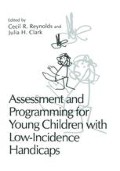Abstract
Epilepsy is certainly one of the more common of the “low incidence handicaps.” Epilepsy affects approximately four million Americans (Epilepsy Foundation of America, 1975) and in three quarters of these individuals it begins in infancy, childhood or adolescence. While affecting only about one percent of children in regular classrooms, its incidence is much higher in the special education classes, approaching 20% in classes for trainable mentally retarded. Over half of teachers in early childhood special education and 75% of TMR teachers are involved with children receiving medical treatment for epilepsy (Gadow, op. cit.).
Access this chapter
Tax calculation will be finalised at checkout
Purchases are for personal use only
Preview
Unable to display preview. Download preview PDF.
Reference
Bagley, C.R. The educational performance of children with epilepsy. British Journal of Educational Psychology, 1970, 40, 82–83.
Baird, H.W., John, E.R., Ahn, H., and Maisel, E. Neurometric evaluation of epileptic children who do well or poorly in school. Electroencephalography and Clinical Neurophysiology, 1980, 48, 683–693.
Consensus Development Conference on Febrile Seizures. Held at the National Institute of Health, May, 1980.
Deonna, T., Fletcher, P., and Voumard, C. Temporary regression during language acquisition: A linguistic analysis of a 21 year old child with epileptic aphasia. Developmental Medicine and Child Neurology, 1982, 24, 156–163.
Deuel, R.K., and Lenn, N.J. Treatment of acquired epileptic aphasia. Journal of Pediatrics, 1977, 90, 959–961.
Dodrill, C.B., and Wilkus, R.J. Relationships between intelligence and electroencephalographic epileptiform activity in adult epileptics. Neurology, 1976, 26, 525–531.
Epilepsy Foundation of America. Basic Statistics in the Epilepsies. Philadelphia: J.A. Davis, Co., 1975.
Force, D. A descriptive study of the incidence of seizures and teacher’s attitudes toward children with epilepsy in Minneapolis. Minnesota public schools. Minneapolis, Minnesota Epilepsy League, 1965.
Gadow, K.D. School involvement in the treatment of seizure disorders. Epilepsia, 1982, 23, 215–224.
Goldin, G.J., Perry, L., Margolin, R.J., Slotsky, B.D., and Foster, J. C. The Rehabilitation of the Young Epileptic. Lexington: D.C. Heath and Company, 1971.
Green, J.R., and Sidell, A.D. Neurosurgical aspects of epilepsy in children and adolescents. in Youmans, F.R. ed. Neurological Surgery, 2nd ed. Philadelphia: W.B. Saunders Co., 1982, 6, 3858–3909.
Hartlage, L.C., and Green, J.B. The relation of parental attitudes to academic and social achievement in epileptic children. Epilepsia, 1972, 13, 21–26.
Hartlage, L.C. Neuropsychological assessment of anticonvulsant drug toxicity. Clinical Neuropsychology, 1981, 3 (4), 20–22.
Holmes, F.L., McKeever, M., and Sanders, Z. Epileptiform activity in aphasia of childhood: An epiphenomenon? Epilepsia, 1981, 22, 631–639.
Jeavons, P.M., and Harding, G.F.A. Photosensitive Epilepsy. Philadelphia: J.B. Lippincott Co., 1975.
Landau, W.M., and Kleffner, F.R. Syndrome of acquired aphasia with convulsive disorder in children. Neurology, 1957, 7, 523–530.
Livingston, S. Comments on a study of light-induced epilepsy in children. American Journal of Diseases of Children, 1952, 83, 409–411.
Maccarrio, M., Hefferen, S.J., Keblusek, S.J., and Lipinski, K.A. Developmental dysphasia and electroencephalographic abnormalities. Developmental Medicine and Child Neurology, 1982, 24, 141–155.
McIntyre, M., Pritchard, P.B. III, and Lombrosos, C.T. Left and right temporal lobe epileptics: A controlled investigation of some psychological differences. Epilepsia, 1976, 17, 377–386.
Nelson, K.B., and Ellenberg, J.H. Prognosis in children with febrile seizures. Pediatrics, 1978, 61 (5), 720–727.
Ounsted, C., Lindsay, J., and Norman, R. Biological Factors in Temporal Lobe Epilepsy. Clinics in Developmental Medicine, No. 22, S.I.M.P. with Heinemann Medical, London, 1966.
Worster-Drought, C. An unusual form of acquired aphasia in children. Developmental Medicine and Child Neurology, 1971, 13, 563–571.
Author information
Authors and Affiliations
Editor information
Editors and Affiliations
Rights and permissions
Copyright information
© 1983 Springer Science+Business Media New York
About this chapter
Cite this chapter
Hartlage, P.L. (1983). Neuropsychological Aspects of Epilepsy and the Effects of Epileptic Medication on Children’s Behavior. In: Reynolds, C.R., Clark, J.H. (eds) Assessment and Programming for Young Children with Low-Incidence Handicaps. Springer, Boston, MA. https://doi.org/10.1007/978-1-4757-9298-0_4
Download citation
DOI: https://doi.org/10.1007/978-1-4757-9298-0_4
Publisher Name: Springer, Boston, MA
Print ISBN: 978-1-4757-9300-0
Online ISBN: 978-1-4757-9298-0
eBook Packages: Springer Book Archive

